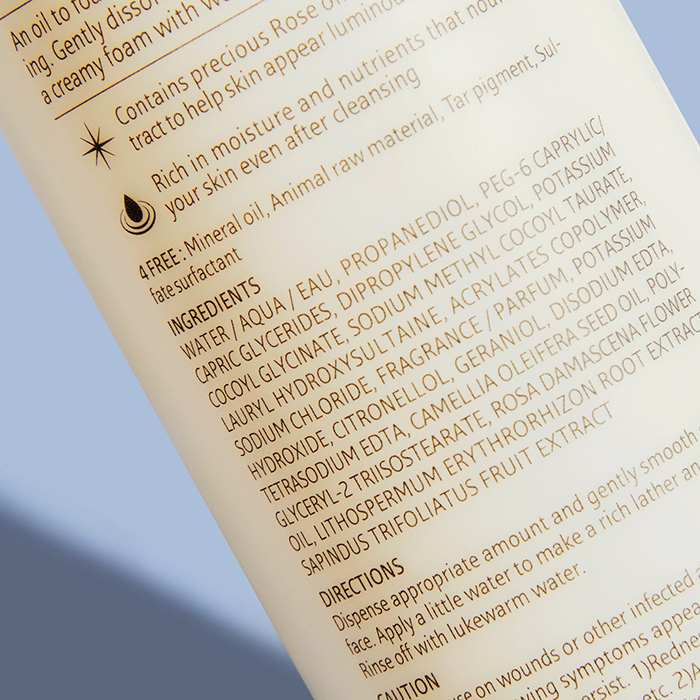Using products that contain active ingredients can be the difference between achieving your skin goals and falling short. But what ingredients are actually classified as active? We explain below.
The term “active ingredient” is thrown around a lot in the skin care sphere but, in many cases, it isn’t being used correctly. Considering just how much there is to know about skin care products, formulations, and ingredients at large, we wanted to take the time to outline what active ingredients are, how to determine whether a product contains an active ingredient, and why inactive ingredients still matter.
What Is an Active Ingredient?
Simply put, the term “active ingredient” refers to a chemical that actively targets a specific skin concern — such as acne, pigmentation, or fine lines — and creates a physical change in your skin, explains Dr. Peterson Pierre, cosmetic dermatologist and founder of the Pierre Skin Care Institute in Thousand Oaks, Calif.
“These ingredients have scientific data showing their efficacy so there is a good chance you’ll get some benefit from including them in your skin care regimen,” he adds. This makes sense because otherwise we wouldn’t have concrete proof an ingredient caused a physical changes in the skin.
Here in the United States, active ingredients are regulated by the U.S. Food and Drug Administration (FDA) and are technically considered “drugs.” We recognize that not all countries abide by the same rule set, which means the definition of an active ingredient varies across the board. That’s partly why the term has become so confusing, and why it’s been adapted colloquially to mean any ingredient that has a notable effect on the skin.
A List of Common Skin Care Actives
The most common active ingredients found in skin care are as follows:
- Zinc Oxide (found in sunscreen): Dr. Pierre tell us this is one of the best sunblock ingredients available because it blocks 100% of UVB rays and 90% of UVA. “Some of the better products are micronized so they rub in completely into the skin and can be a cosmetically elegant option even for skin of color,” he says.
- Avobenzone (found in sunscreen): another prized ingredient found in sunscreen that blocks both UVB and UVA rays.
- Salicylic Acid (BHA) — A strong exfoliating acid that causes the skin to shed and peel to reveal brighter, clearer, smoother skin. It’s a common acne-fighting ingredient, and also used to treat warts.
- Hydroquinone — Though not approved for pregnant women, hydroquinone is a powerful lightening agent. Dr. Pierre says it comes in a variety of different strengths and is the product of choice for stubborn pigmentation.
- Benzoyl Peroxide — “This active ingredient is great at killing bacteria and decreasing oil production, leading to improvement in acne as well as whiteheads and blackheads,” says Dr. Pierre.
- Retinoids (vitamin A) — This anti-aging, exfoliating antioxidant helps stimulates collagen production and helps with fine lines, pores, acne, and pigmentation. With consistent use, it can make skin softer, smoother, and clearer.
Note that the above isn’t a comprehensive list of all active ingredients that follow the FDA’s definition.
Two common “gray area” skin care actives are as follows:
- Vitamin C — An antioxidant superhero that wards off free radical damage. Dr. Pierre adds that it “helps exfoliate the skin, improving tone and texture and it also helps with pigmentation. It also stimulates collagen production and helps improve fine lines.” Aim for 10% or higher concentration.
- Glycolic Acid — One of the most common alpha hydroxy acids (AHAs). In addition to exfoliating the skin to improve texture and tone, it can also foster collagen production. It’s commonly used to treat hyperpigmentation and acne.
How to Identify Actives on a Product Label
“Typically, active ingredients will be the first one to five ingredients that are listed first on the product label. They’re usually listed in decreasing order of importance and/or concentration, and the ingredient should produce an effect when used,” says Dr. Pierre. “Regarding marketing, many products over-promise and under-deliver. The product label may look promising, but if the actives aren’t the first few ingredients then they’re not likely to do much.”
He adds that concentration is big issue, and that without enough of the active ingredient, you’re not likely to see much improvement. On that note, the FDA actually stipulates that active products have their active ingredients clearly labeled on the packaging along with its “quantity, kind, and proportion of any alcohol.” There are some exceptions to this rule, so it’s not always super clear, but examples of this can be found here, here, and here.
Why Inactive Ingredients Still Matter
The bottom line is that inactive ingredients matter because formulation matters. In terms of inactive ingredients found in a product along with active ingredients, they should play a supporting role in the efficacy of the active ingredient.
How a product is formulated can impact how well the active ingredient is absorbed into your skin, how potent in remains over time, and how your skin reacts. For example, a poorly formulated vitamin C product can degrade in a matter of weeks, and a poorly formulated retinoid can leave your skin especially raw and sensitive.
Additionally, products formulated solely with inactive ingredients are wonderful and necessary complements to the active products in your regimen. They generally help nourish, hydrate, plump, soothe, and restore.
